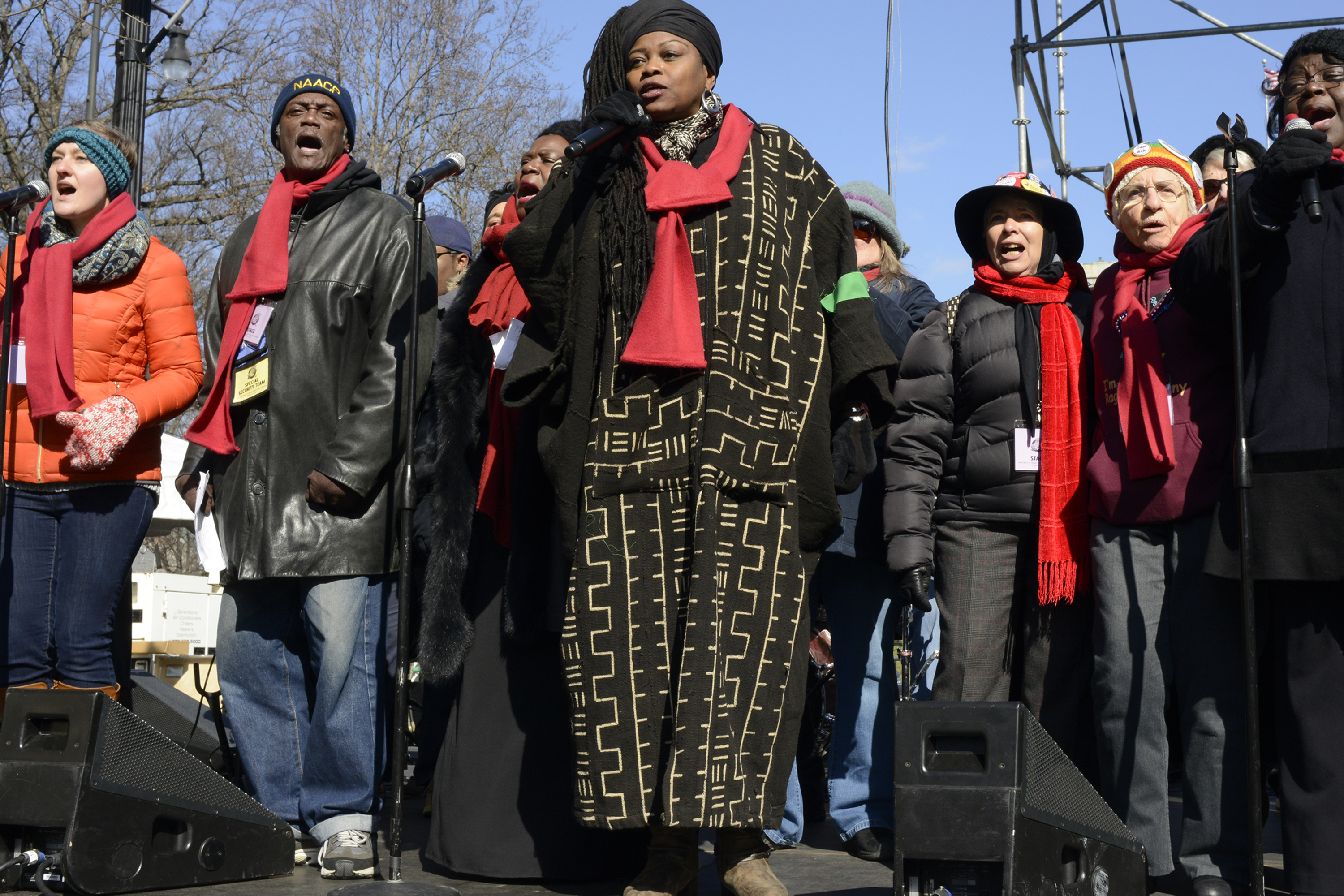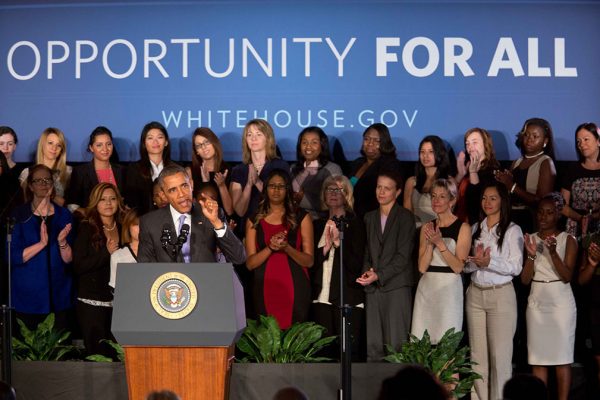When I ran for president of the North Carolina NAACP in 2006, my campaign slogan was “From Banquets to Battle.” We were the oldest antiracist organization in the country, I told our branches, but often we contradicted our own founding and limited ourselves as a Black organization.
Furthermore, we’d settled into traditions of celebrating the past and didn’t have a clear vision of what was at stake in the present. The United States was quickly becoming a nation where white people were going to be one among many minorities, but old fears and vested interests were allied in pitting us against one another to undermine the promises of democracy. If we could come together and learn to fight together across lines drawn to divide us, we had the potential to shift the moral narrative, birth a movement, build a new voting coalition that could elect a governing majority committed to the common good, and seed that vision to the South and the whole nation. But we had to be clear: we were up against forces that did not want this solidarity, and they were willing to subvert democracy and dismantle public institutions to protect their power.
I won the election and went to work, but we didn’t go out singing “Solidarity Forever” and expect a coalition to join. Instead, we asked, “Solidarity for what?” I made the case that we needed to build a broad fusion coalition, one modeled on North Carolina’s and the Southern Fusion movement after Reconstruction and the broad fusion coalitions that formed during the civil rights movement. It was a struggle to get people on board, even within the NAACP. But I went to visit with the leaders of groups committed to education, health care access, workers’ rights, voting rights, LGBTQ rights, women’s rights, and environmental justice. I asked them all the same question: Who’s preventing you from getting what you want? I watched them nod their heads as I told them that other groups had named the same adversaries.
Within a year, we built the Forward Together Moral Movement coalition and marched with thousands of people to the statehouse. Our new solidarity allowed us to successfully lobby the state legislature to raise the minimum wage and expand access to the ballot by providing a two-week period of early voting with same-day registration. In 2008 these voting laws played a key role in electing Barack Obama, who lost on Election Day itself but won thanks to early voting, along with a progressive governor and attorney general. But our real victory wasn’t electing any particular candidate; it was revealing that we had built a new coalition that had the power to change the political calculus for the whole country.
Looking back, I find it striking that our adversaries paid more attention to this victory than our potential allies did. Progressive organizing groups and the Democratic Party didn’t immediately invest in coalition building in the South, but the Koch Network and other groups poured millions into the 2010 state legislature races in North Carolina. By 2011 the Department of Justice approved a discriminatory redistricting plan that we would later beat in court, but only after it allowed the election of an extreme Republican supermajority.
The reaction to our fusion movement was the waging of an assault on democracy that in many ways anticipated the Republican Party’s embrace of MAGA extremism. Nevertheless, we kept on, and in 2013 we launched Moral Mondays, a campaign involving protest at the state legislature every Monday afternoon as well as in the courts, at the ballot box, and in local organizing across the state.
In response to Mie Inouye’s reflection on the challenges of building solidarity, I want to share three lessons we learned in the Moral Monday movement—lessons that are hardly new but rather echo the long history of organizing in America’s First and Second Reconstructions. After marching from Selma to Montgomery in 1965, Dr. King said that the great fear of the “Southern aristocracy” was that poor whites and poor Blacks would see their common interests and stand in solidarity against plantation capitalism. Moral Mondays helped me to see that we are called to realize that fear—and, in the process, to hopefully transform some of our adversaries into friends. In 2018 we used what we’d learned in Moral Mondays to relaunch the 1968 Poor People’s Campaign as a moral fusion movement to defend and expand democracy across the United States. This work is ongoing, and these lessons outline the strategy we are trying to put into practice.
First, solidarity requires a moral framing. People showed up to Moral Mondays because they saw that what was happening to particular people was wrong, not because they understood our adversaries’ strategy. In 2013, when the state legislature pushed a monster voter suppression bill, our movement lifted up Ms. Rosanell Eaton, who had memorized the Preamble to the Constitution to pass a Jim Crow voting exam and gone on to register more than four thousand voters but now, in her nineties, would not be able to vote. Mother Eaton, arrested for her role in a Moral Monday protest, told us all it was time to fight together. We used language from our state constitution and our religious traditions to explain why the denial of Ms. Eaton’s humanity wasn’t an issue of left versus right but right versus wrong. The common commitment to love, mercy, and the good of the whole provides the first basis for solidarity.
Second, solidarity requires explaining how issues interlock. If voter suppression targeted Black women like Ms. Eaton, we also had to show that it impacted poor white people, college students, and women across the board. When we sued to challenge the final voter suppression bill that passed, we developed a legal strategy based on this fusion vision that was successful in overturning the law in federal court. The interlocking didn’t stop there; it was equally important that we show how voter suppression was connected to health care access. Because extremists were able to gerrymander a supermajority in the legislature, they could deny half a million North Carolinians health care by refusing Medicaid expansion under the Affordable Care Act. We disaggregated the numbers to show that hundreds of thousands of those low-income people were white and tens of thousands were veterans, and we invited them to join Ms. Eaton on the stage. In the Poor People’s Campaign today, we insist that poverty, systemic racism, ecological devastation, the denial of health care, militarism, and the distorted moral narrative of religious nationalism are interlocking injustices undermining the promise of democracy. We cannot work in silos, with different constituencies for each of these issues. We must learn to name our shared pain to recognize that the forces causing harm are the same.
Third, moral fusion is what holds people together. Inouye is right that “social endurance” is the great challenge for any movement. Our adversaries believe they can outlast us; when we protest, they say, “Let them blow off their steam. They’ll be gone next week.” But from the beginning of Moral Mondays, we insisted that this had to be a movement, not a moment—we were determined to keep showing up. In 2014 over eighty thousand people showed up in the dead of winter to declare, in body, soul, and political engagement, “Forward together, not one step back.”
How do we nurture endurance, especially among people often struggling to survive? My understanding of movements is informed by the biblical notion that the stone that the builders rejected becomes the chief cornerstone. In Moral Mondays, the people denied access to Medicaid, the people whose votes were being suppressed, the people who saw how cuts to public education were going to hurt their communities—these were the people who recognized the importance of our moment, and they kept showing up despite threats and major pushback from those in power. People who’ve lived with their backs against the wall see that kind of resistance as confirmation of their power, and that is why, throughout history, people rejected by society are often the very ones to lead transformative movements. “Only a dying mule kicks the hardest,” they used to say in the South African struggle against apartheid.
As I’ve traveled the United States over the past five years, I’ve seen that the 140 million poor and low-income people who know this country isn’t working for them are the leaders we need to reclaim the promises of democracy and to build a Third Reconstruction. Culture-war tactics are designed to pit us against each other, but poor and low-income people are like the three Hebrew children in the Book of Daniel who knew that, when they faced the fiery furnace, their only hope was to stick together. The biblical text says that, unexplainably, a fourth person emerged to join them in the fire.
For those who don’t share the language of faith, a metaphor from the physical world may suffice. Hydrogen and oxygen, on their own, are two of the most volatile elements in nature, but when they come together as H2O, they form a molecule necessary to all life as we know it. In a similar way, my work over the past two decades has taught me that interest groups can be both powerful and volatile when we work in silos, but when we come together in moral fusion movements, we can become something more than any of us is capable of on our own—maybe even something powerful enough to sustain the promises of democracy and the health of our planetary home.








